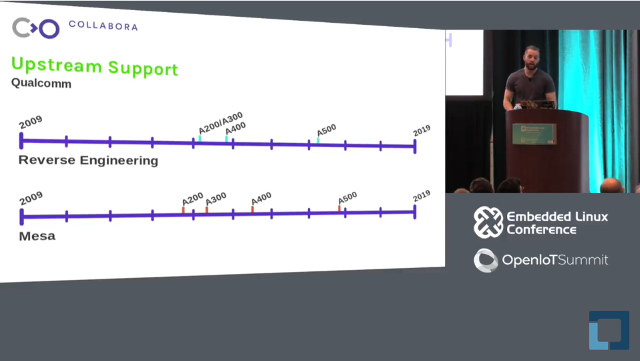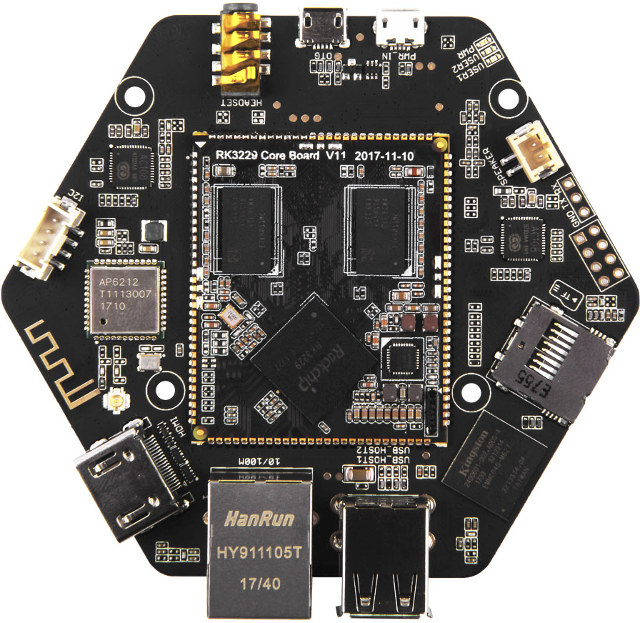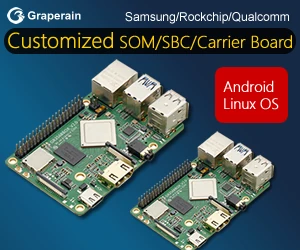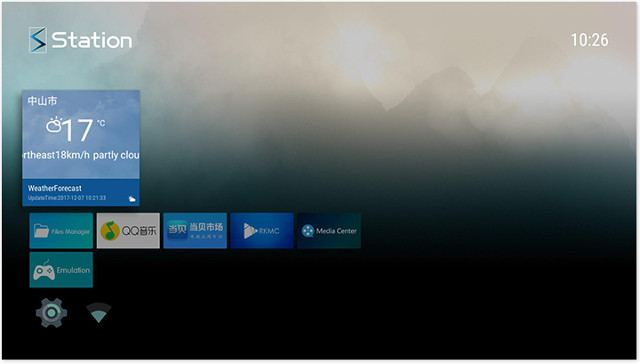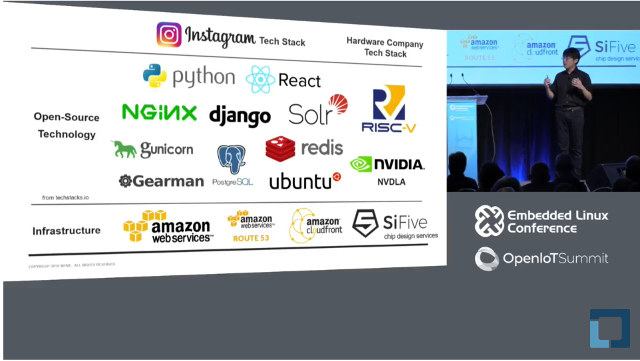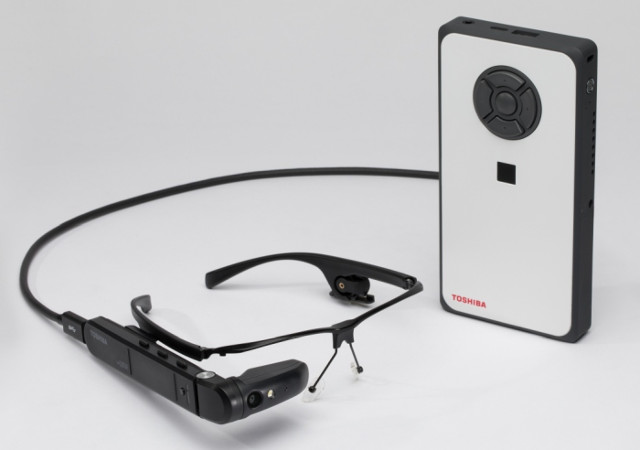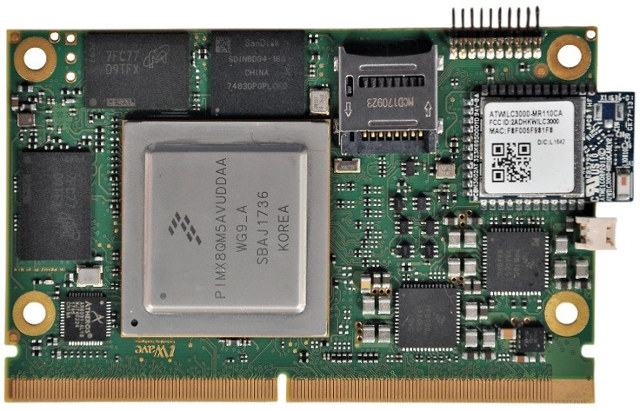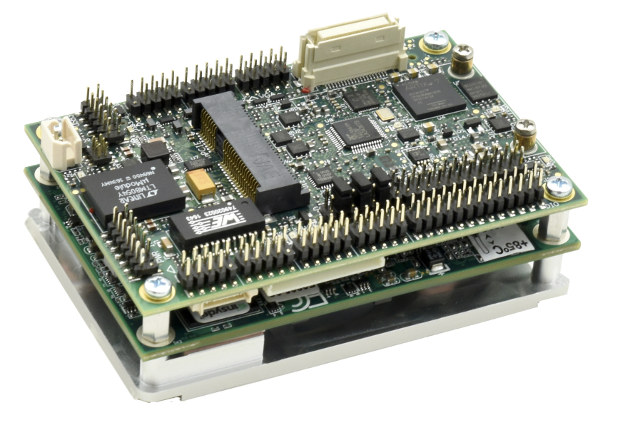The Embedded Linux Confernce is on-going, and the Linux Foundation has been uploading videos about talks in a timely manner on YouTube. I checked out at RISC-V keynote yesterday, but today I’ve watched a talk by Robert Foss (his real name, not related to FOSS) from Collabora entitled “Progress in the Embedded GPU Ecosystem”, where he discusses open source software support in Linux/Mesa from companies and reverse-engineering support. The first part deals with the history of embedded GPU support, especially when it comes to company support. Intel was the first and offers very good support for their drivers, following by AMD who also is a good citizen. NVIDIA has the Nouveau driver but they did not really backed it up, and Tegra support is apparently sponsored by an aircraft supplier. Other companies have been slower to help, but Qualcomm has made progress since 2015 and now support all their hardware, […]
ReSpeaker Core v2 is a 6-Mic Array Audio Development Kit Powered by Rockchip RK3229 Processor
Seeed Studio launched ReSpeaker Core board designed for voice interaction in 2016. The board was based on a Mediatek MT7688 MIPS WiSoC running OpenWrt, and came with a single built-in microphone, although a microphone array board with 7 microphones and 12 LEDs was also offered as option. The company is now back with a more powerful update of the board – called ReSpeaker Core v2 – featuring Rockchip RK3229 quad core Cortex A7 processor, running Debian Linux, and with 6 on-board microphones. Beside WiFi connectivity, the board also adds Ethernet and Bluetooth 4.0, as well as a USB hot port compared to the previous version. ReSpeaker Core v2 specifications: SoC – Rockchip RK3229 quad core Cortex A7 processor @ up to 1.5 GHz with Arm Mali-400MP2 GPU System Memory – 1GB DDR3 RAM Storage – 4GB eMMC flash, micro SD card slot Video Output – HDMI 2.0 (but drivers not […]
Android based Station OS Firmware Focuses on Multimedia and Retro Gaming for ROC-RK3328-CC and Firefly-RK3399 Boards
If you’re interesting in gaming and multimedia, one choice is to run Linux based RetrOrangePi or RetroPie on your favorite development board/SBC, and soon, with the upcoming release of Kodi 18, multimedia and retro gaming will just be an app installation away in Android, and other supported operating systems, since RetroPlayer retro-gaming emulator is part of the latest – and yet-to-be-released – version of Kodi. In the meantime, if you own a ROC-RK3328-CC and/or Firefly-RK3399 board(s), you may want to try Station OS, a firmware based on Android with a focus on 4K video playback and retro gaming. The description claims that Stations OS includes “more than 20 kinds of optimization for video and games, achieve multimedia center, Kodi 4K hardware decoding, game simulator hardware acceleration, real-time cast screen display, network acceleration, perfect Root.” The firmware does not use Kodi directly, but RKMC fork instead with some improvements, and they […]
RISC-V Keynote at Embedded Linux Conference 2018 (Video)
The Embedded Linux Conference and OpenIoT Summit 2018 have just started, and the Linux Foundation has already uploaded a few keynote videos to YouTube, including the one by Yunsup Lee, Co-Founder and CTO, SiFive, entitled “Designing the Next Billion Chips: How RISC-V is Revolutionizing Hardware”. Yunsup explains the current problem with chip development, and go through the open source RISC-V solutions offered by Sifive. Currently design a chip has a high upfront (NRE = non-recurring engineering) costs, is time-consuming (1.5 to 2 years at least) and silicon vendors normally target high volume production, but now many applications like IoT or machine learning require custom chips that may not be (yet) manufactured in such high volume. The solution is to adapt some idea from open source software to open source hardware in order to lower the costs, enable fast prototyping, and involve the community of designers and software developers. He took […]
Toshiba Unveils dynaEdge AR Smart Glasses Powered by a Portable Windows Mini PC
Smart glasses have never really gained traction in the consumer space, but they can still be useful in the workplace, especially with augmented reality, where relevant data can be overlaid on top of the user’s view. Toshiba has launched one of those products with dynaEdge AR smart glasses, but instead of having the battery and electronics on the glasses themselves, a portable mini PC running Windows takes care of the heavy lifting and the battery. This should make the glasses lighter – provided proper cable management -, and offer longer battery life. dynaEdge AR100 head mounted display (HMD) specifications: Display – 0.26″ with 640 x 360 resolution (equivalent to 4.1″ display about 35cm away); angle adjustment Audio – Dual microphone with noise cancellation, speaker USB – USB type C port to connect to mini PC Sensors – Ambient light, compass, gyroscope, proximity Location – GPS support Built-in Camera Misc – […]
iWave Systems iW-RainboW-G27M SMARC 2.0 SoM Features NXP i.MX8 QuadMax Processor
We’ve previously seen SECO will soon launch SM-C12 SMARC 2.0 SoM powered by NXP i.MX 8M processor, but there’s not the only company working on a SMARC 2.0 compliant system-on-module powered by the latest NXP 64-bit Arm processor, as iWave Systems iW-RainboW-G27M module should be coming up soon with a more powerful NXP i.MX 8QuadMax Arm Cortex A72/A53/M4 processor coupled with 4GB LPDDR4 RAM by default. The i.MX8QuadMax SMARC System-on-Module targets “complex embedded application of consumer, medical and industrial embedded computing applications”. iWave Systems iW-RainboW-G27M specifications: SoC – NXP i.MX8 QuadMax processor with 2x Cortex-A72 @ 1.8 GHz, 4x Cortex-A53 @ 1.2 GHz,2 x Cortex-M4F @ 266 MHz, 2x Vivante GC7000XSVX GPUs, and a 4K H.265 decode & 1080p h.264 enc/dec capable VPU System Memory – 4GB LPDDR4 (Expandable) On-module Storage – 16GB eMMC Flash (Expandable), micro SD slot, optional 256MB QSPI Flash On-module Connectivity – 2x Gigabit Ethernet PHY, […]
Diamond Systems Zeta is a Miniature SBC Based on Bay Trail/Apollo Lake COM Express Mini Modules
Diamond Systems, a Silicon valley based company providing embedded computing solutions for transportation, energy, aerospace, defense, manufacturing, medical and research market, has recently introduced Zeta single board computer comprised of a baseboard, a choice of COM Express Mini type 10 modules based on Intel Bay Trail or Apollo Lake processor, and a heatspreader for cooling. The company explains the small size and high feature density of the solution make it particularly suitable for mobile applications. The SBC also supports a wide range 6-36VDC input voltage, and works in -40 to +85°C temperature range. Zeta SBC specifications: COM’s Processor and System Memory Intel Atom Bay Trail E3825 dual core processor @ 1.33GHz with 2GB RAM Intel Atom Apollo Lake E3940 quad core processor @ 1.6GHz with 4GB RAM Intel Pentium Apollo Lake N4200 quad core processor @ 1.1GHz (burstable to 2.5GHz) with 8GB RAM Storage – 1x mSATA socket , 1x […]
Acer Iconia One 10 is a 10.1″ Tablet Powered by Mediatek MT8167B Quad Core Cortex A35 Processor
So far, I had not seen that many devices based on Arm Cortex A35 64-bit cores which promise better performance than Cortex A7, while consuming 32% less than a Cortex A53. But Mediatek released MT8167B quad core Cortex A35 last year supporting 1080p30 video decoding, and HD+ (1280×800) displays. There’s also a Mediatek MT8167A SoC clocked at a higher 1.5 GHz, capable of handling higher resolution 1920×1200 displays, and 1080p60 videos. Acer Iconia One 10 tablet – also released last year – is powered by MT8167B SoC, and comes with 2GB RAM, 32GB storage, and a 10.1″ HD+ Display. Acer Iconia One 10 (B3-A40) specifications: SoC – MediaTek MT8167B quad core Cortex A35 processor @ 1.30 GHz with Imagination PowerVR GE8300 GPU System Memory – 2 GB DDR3L RAM Storage – 16 or 32GB storage, Micro SD Card slot up to 128 GB Display – 10.1″ IPS touch screen display; […]

